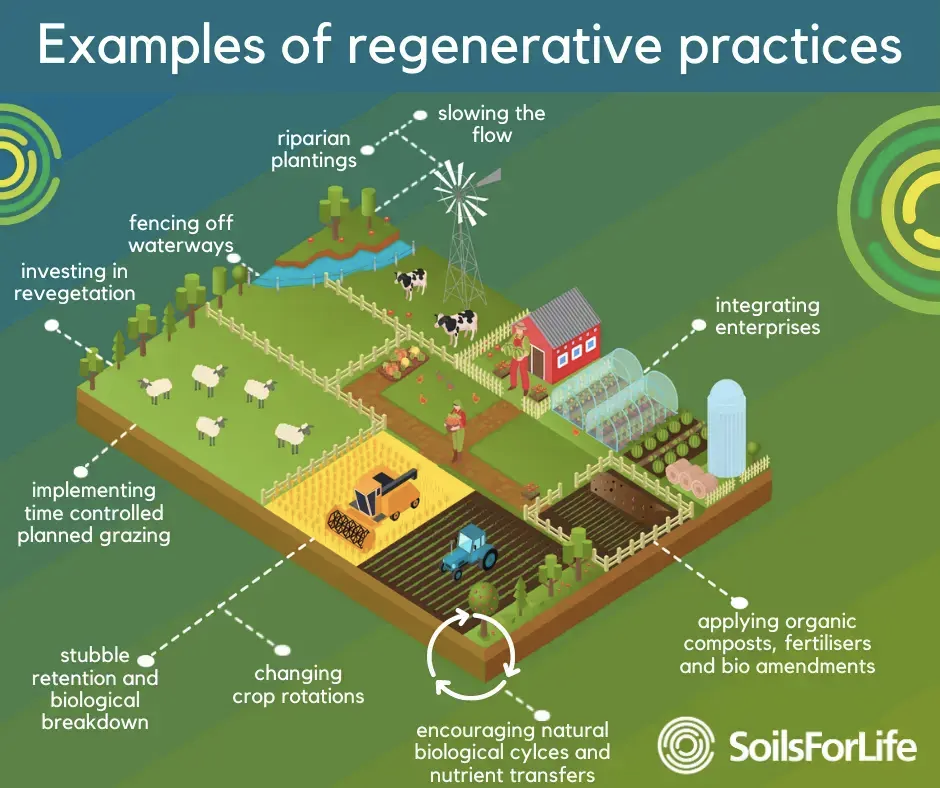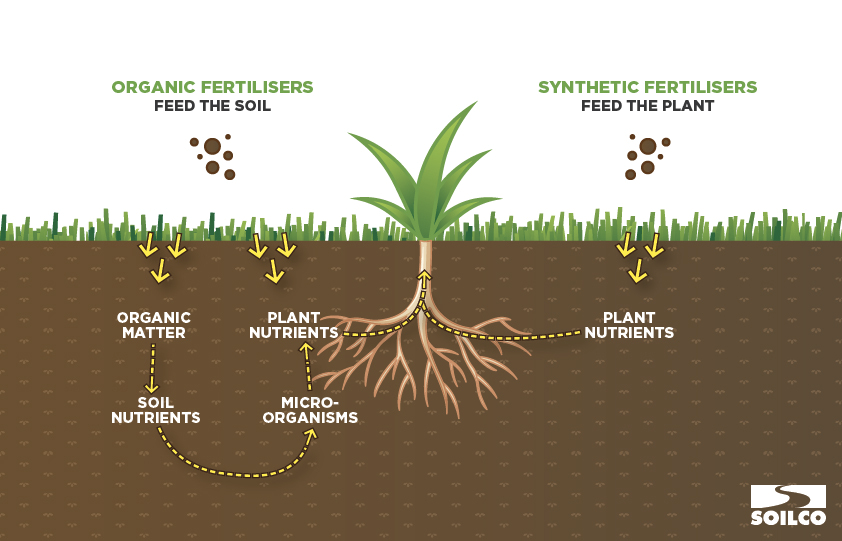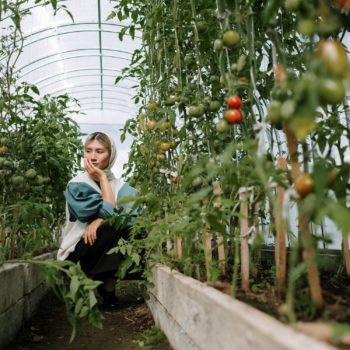|
|
In a world grappling with climate change, dwindling resources, and food insecurity, a remarkable agricultural revolution is quietly taking root.
Enter regenerative agriculture – a groundbreaking approach that promises to transform the way we grow our food, nurture our planet, and secure a sustainable future for generations to come.
But what exactly is regenerative agriculture, and why is it causing such a stir among farmers, scientists, and environmentalists alike?
Imagine a farming method that not only feeds the world but also heals the soil, replenishes ecosystems, and reduces carbon emissions.
Regenerative agriculture goes beyond sustainability, emphasizing the regeneration of natural systems, capturing carbon, and fostering biodiversity. It harnesses the power of nature, encouraging farmers to become stewards of the land and nurture a delicate dance between plants, animals, and soil microorganisms.
Get ready to dig deep into the principles, practices, and profound benefits of regenerative agriculture as we unlock its secrets and unravel the potential it holds to revolutionize our global food system.
The Principles of Regenerative Agriculture
Regenerative agriculture is guided by a set of principles that form the foundation of this holistic approach. These principles are rooted in regenerating soil health, promoting biodiversity, conserving water, and sequestering carbon.
Holistic Approach to Farming
Regenerative agriculture recognizes the interconnectedness of various components in an ecosystem. It encourages farmers to consider the entire farm as a living organism, where each element influences and supports the others.
By adopting a holistic mindset, farmers can design systems that work in harmony with nature and maximize overall productivity.
Soil Health and Regeneration
At the core of regenerative agriculture lies the restoration and enhancement of soil health. Healthy soil acts as a living, dynamic ecosystem teeming with beneficial microbes, fungi, and other organisms.
Regenerative practices, such as cover cropping, minimal tillage, and composting, improve soil structure, increase organic matter content, enhance nutrient cycling, and foster the development of robust microbial communities.
Biodiversity Promotion
Regenerative agriculture embraces biodiversity as a key driver of ecosystem resilience. By encouraging the coexistence of various plant and animal species, farmers can mimic the diversity found in natural ecosystems.
This approach helps control pests and diseases naturally, improves pollination, enhances nutrient cycling, and creates habitat for beneficial organisms.
Water Conservation and Management
Water scarcity is a pressing global issue, making efficient water management crucial in agriculture. Regenerative practices focus on reducing water usage through techniques such as drip irrigation, mulching, and contour farming.
Additionally, by enhancing soil health and structure, regenerative agriculture improves water infiltration and retention, minimizing runoff and erosion.
Carbon Sequestration and Climate Resilience
Regenerative agriculture plays a vital role in combatting climate change by actively capturing and storing carbon dioxide from the atmosphere.
Through practices like agroforestry, silvopasture, and cover cropping, carbon is sequestered in both above-ground and below-ground biomass, mitigating greenhouse gas emissions and enhancing the resilience of farming systems to climate variability.
Practices and Techniques of Regenerative Agriculture
Regenerative agriculture encompasses a range of practices and techniques that farmers can employ to achieve the principles mentioned above. These practices work synergistically to regenerate the land and create sustainable food production systems.

Cover Cropping and Crop Cotation
Cover crops, such as legumes, grasses, and brassicas, are grown during fallow periods or alongside cash crops. They protect the soil from erosion, suppress weeds, enhance soil fertility, and provide habitat for beneficial insects and microorganisms.
Crop rotation, alternating different crops in a sequence, helps break pest and disease cycles, improves soil health, and reduces the reliance on synthetic inputs.
No-Till and Minimal Tillage Methods
Traditional tillage practices contribute to soil degradation by disrupting soil structure and depleting organic matter. In contrast, regenerative agriculture promotes no-till or minimal tillage techniques.
By reducing or eliminating plowing and cultivation, farmers preserve soil structure, prevent erosion, retain moisture, and preserve beneficial soil organisms.
Agroforestry and Silvopasture
Agroforestry combines trees and crops or livestock in a mutually beneficial arrangement.
Trees provide shade, windbreaks, and valuable products like fruits or timber, while crops or animals benefit from the tree’s microclimate and nutrient cycling.
Silvopasture integrates trees, forage crops, and grazing animals, creating a productive and sustainable system that supports biodiversity, sequesters carbon, and provides economic benefits.
Integration of Livestock and Crop Farming
Regenerative agriculture recognizes the valuable role of livestock in enhancing soil health and nutrient cycling.
Integrating animals into farming systems allows for the recycling of organic matter through managed grazing and the use of animal manure as fertilizer.
This integration creates a symbiotic relationship between crops and livestock, reducing the need for synthetic inputs and improving overall system resilience.
Composting and Nutrient Cycling
Composting is a key practice in regenerative agriculture, as it recycles organic waste materials into nutrient-rich soil amendments.
By collecting and composting crop residues, animal manure, and other organic materials, farmers can improve soil fertility, enhance microbial activity, and reduce reliance on synthetic fertilizers.
Nutrient cycling, facilitated by diverse crop rotations and cover cropping, further optimizes nutrient availability and reduces nutrient runoff.
The Environmental and Social Benefits of Regenerative Agriculture
Regenerative agriculture offers a multitude of benefits, both for the environment and society at large. By adopting regenerative practices, farmers can unlock significant positive impacts that go beyond conventional farming methods.
Soil Regeneration and Improved Fertility

Regenerative agriculture nurtures soil health and promotes the regeneration of degraded soils.
As organic matter content increases and soil structure improves, soil fertility is enhanced. This leads to increased yields, improved nutrient retention, better water infiltration, and reduced soil erosion.
Healthy soils also sequester more carbon and support diverse and resilient ecosystems.
Enhanced Biodiversity and Ecosystem Health
By promoting biodiversity, regenerative agriculture creates habitats for a wide range of organisms, including pollinators, beneficial insects, and soil microorganisms. This rich diversity improves ecosystem resilience, pest control, and nutrient cycling.
Additionally, the preservation of native habitats and the integration of trees and vegetation contribute to the conservation of wildlife and the overall health of ecosystems.
Water Quality and Conservation
Regenerative practices, such as cover cropping and minimal tillage, help reduce water runoff, erosion, and pollution.
These practices enhance soil structure and water-holding capacity, allowing for better water infiltration and retention.
By minimizing chemical inputs and synthetic fertilizers, regenerative agriculture also reduces the risk of water contamination, preserving water quality for both humans and aquatic ecosystems.
Carbon Sequestration and Climate Change Mitigation
One of the most significant advantages of regenerative agriculture is its potential to mitigate climate change. By sequestering carbon in the soil and biomass, regenerative practices help offset greenhouse gas emissions.
Healthy soils act as carbon sinks, effectively removing CO2 from the atmosphere and storing it long-term. This process not only reduces the impact of agriculture on climate change but also enhances the resilience of farming systems to extreme weather events.
Economic Viability and Community Resilience
Regenerative agriculture offers economic benefits to farmers by reducing input costs, improving yields, and diversifying income streams.
By minimizing the reliance on synthetic inputs and reducing the need for expensive machinery and chemical fertilizers, regenerative practices can make farming more economically sustainable.
Additionally, regenerative agriculture promotes local food systems, fosters community engagement, and strengthens rural economies.
Overcoming Challenges and Scaling Up Regenerative Agriculture
While regenerative agriculture shows great promise, it also faces challenges that need to be addressed for widespread adoption and scalability.
Financial and Technical Barriers
Transitioning from conventional to regenerative practices often requires upfront investments in infrastructure, equipment, and knowledge. Farmers may face financial constraints, limited access to funding, and a lack of technical expertise.
Overcoming these barriers requires innovative financial mechanisms, supportive policies, and educational programs to facilitate the adoption of regenerative practices.
Policy and Market Support
Governments play a crucial role in supporting regenerative agriculture through policies that incentivize and reward sustainable practices.
This includes providing financial support, creating regulatory frameworks that promote regenerative farming, and establishing market mechanisms that value and differentiate regeneratively produced goods.
Collaboration between policymakers, farmers, and consumers is vital to driving the necessary systemic changes.
Education and Knowledge Dissemination
Education and knowledge dissemination are key to accelerating the adoption of regenerative agriculture.
Farmers need access to training, workshops, and resources that equip them with the skills and knowledge to implement regenerative practices effectively.
Establishing networks, partnerships, and knowledge-sharing platforms can facilitate the exchange of best practices and ensure that regenerative agriculture becomes a mainstream approach.
The Future of Regenerative Agriculture

Regenerative agriculture holds immense potential to revolutionize our global food system and address pressing environmental and social challenges. Its adoption and scalability are crucial for a sustainable and resilient future.
Potential for Widespread Adoption
As awareness of the environmental and social impacts of conventional agriculture grows, so does interest in regenerative practices.
Governments, organizations, and farmers worldwide are increasingly recognizing the potential of regenerative agriculture to address critical issues such as climate change, soil degradation, and food security.
The momentum for change is building, with numerous initiatives and collaborations promoting the adoption of regenerative agriculture.
Regenerative Agriculture – Real-world Examples
Now let’s take a look at how this groundbreaking concept can be applied to real-world farming systems.
General Mills
As a proven and reliable US food company, General Mills is committed to going beyond simple sustainability – they want to help regenerate the planet.
In 2019, General Mills committed to using regenerative agriculture on 1 million acres by 2030. The company believes that the adoption of this approach can help reduce its greenhouse gas emissions by 30% until 2030 and achieve net zero emissions by 2050.
General Mills aims to understand and develop regenerative agriculture by measuring its impact across areas like soil health, water use, biodiversity, economic resiliency, and animal well-being.
Ridgedale Farm
Located in Sweden, Ridgedale Farm AB is a premier educational site that aims to teach new generations of farmers about regenerative agriculture, agroforestry, and other eco-friendly concepts.
Students can participate in a range of courses and workshops at Ridgedale Farm, gaining hands-on experience in regenerative practices of holistic management, water distribution, and tree planting.
Despite being located in a very unforgiving environment, the Ridgedale Farm’s classes consistently prove that sustainable and regenerative agriculture can thrive everywhere – as long as the right techniques and principles are applied.
Bec-Hellouin Farm
Nestled in the heart of Normandy, France, Bec-Hellouin Farm is a shining example of regenerative agriculture in action.
Established in 2006 by Perrine and Charles Hervé-Gruyer, the Bec-Hellouin Farm has successfully integrated permaculture principles, agroforestry, and bio-intensive farming methods to create a thriving ecosystem that supports biodiversity and soil health.
The farm’s approach to regenerative agriculture is based on the belief that nature is the ultimate guide in designing sustainable and productive landscapes. As such, it follows a tiered system where different layers of plants and wildlife exist alongside the growing crops.
The farm incorporates numerous techniques such as multi-cropping, composting, and randomized planting to a great effect – the 2018 case study revealed that the soil organic carbon stocks were significantly higher than those typical for the pasture plots.
The farm encompasses barely 1.8 hectares, and yet it is capable of growing 800 types of vegetables, fruits, and herbs.
Collaboration and Partnerships for a Regenerative Future
Creating a regenerative future requires collaboration across sectors and stakeholders.
Governments, farmers, scientists, environmental organizations, and consumers must come together to create an enabling environment for regenerative agriculture.
By fostering partnerships, sharing knowledge, and aligning efforts, we can accelerate the transition to regenerative practices on a global scale.
Conclusion
Regenerative agriculture offers a transformative path forward, where food production, ecosystem health, and climate resilience go hand in hand.
By embracing the principles and practices of regenerative agriculture, we can cultivate a greener and more sustainable future.
Through soil regeneration, biodiversity promotion, water conservation, carbon sequestration, and community resilience, regenerative agriculture showcases the potential to nourish both people and the planet.
As we stand at the crossroads of agricultural systems, let us seize the opportunity to embrace regenerative agriculture and embark on a journey toward a future where the way we grow our food not only sustains us but also regenerates the natural world we depend on.













No Comments